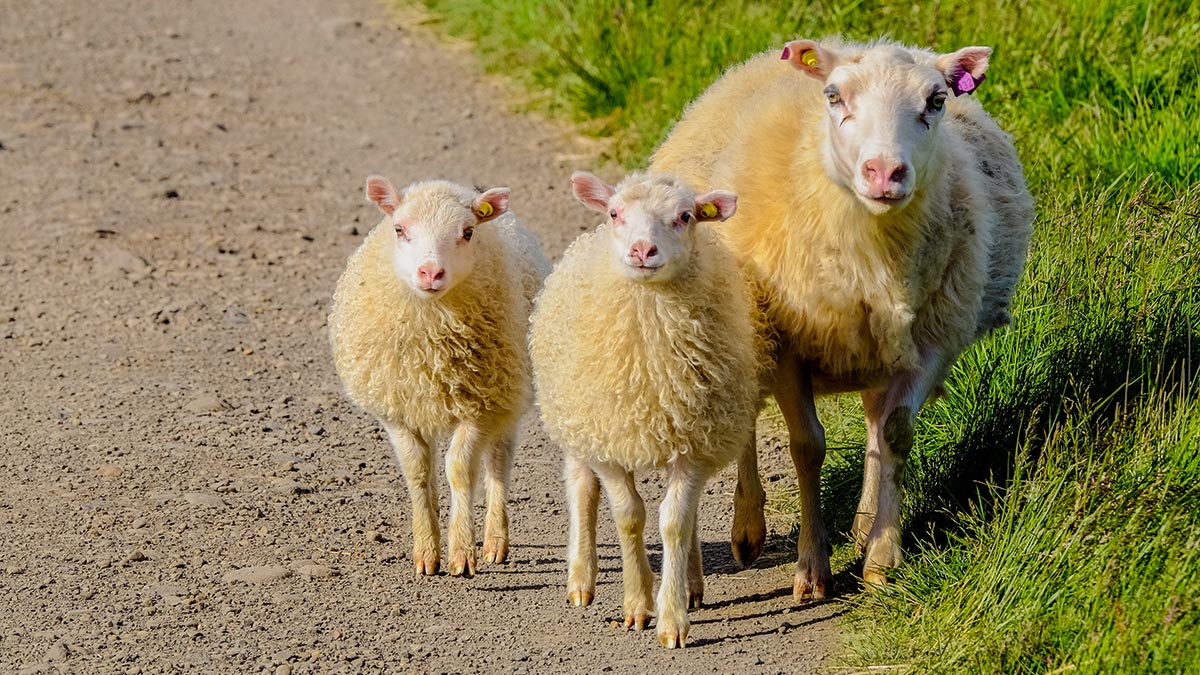
At the time of birth, a lamb usually weighs five to eight pounds.
Mary had a little lamb; its fleece was white as snow! One thing we have always been taught; a lamb is little and its fleece is white. What we don’t know is that the definition of a lamb varies from country to country. In New Zealand for example, lambs are sheep under twelve months of age. In Australia, a sheep under twelve months of age with no permanent incisors would be called a lamb.
A lamb stays inside the mother for 142 to 152 days before she gives birth. At the time of birth, a lamb usually weighs five to eight pounds. Multiple births can have shorter gestation periods so a lamb already born can expect twin or triplet siblings the next time its mother gets pregnant!. After lambing, the lamb is fed by its mother and if properly cared for, it weans generally between two to three months of age. Also, caretakers and farmers at sheep farms have an important role to play in this case. There is a term in rendering lambs known as “mismothering”, which leaves lambs weak, small and requiring assistance.
When born, a lamb has a tail! They shed the tail off as they grow up. All lambs have two digit feet since the time of birth. Like all mammals, they are fully developed when born; only their teeth and sexual maturity appears in the later part of their ages. However, lambs never develop upper teeth. They only have teeth on their lower palette.
All sheep make the sound “baa” but lambs make a high-pitched sound different from “baas” and is called bleating. A lamb’s name changes throughout their lives. They are called lambs when they are born, hoggets; when they are a year old and two-tooth when they are two years old! As they grow up they change into rams or ewes depending on their gender.
Care Facts for Raising Lamb
Baby lambs are a sheep that’s under one year of age. A lamb needs a considerable amount of space as they’re considered to be grazing animals. They also appreciate shelter from the outside elements so a full size barn will be necessary. A lamb’s diet consists of mostly grass, clover and pasture plants that can be found in a field. Lambs take a long time to eat and often graze for about seven hours out of each day. It’s smart to have the area in which you keep your sheep fenced in. A fence will keep predators out and help your sheep to stay within an area that you can keep track of them and monitor their safety.
If you worry you don’t have the right amount of grass your lamb needs to graze, you can supplement their diet with hay. Grains also work well for diet supplementation. While humans often slack on the amount of water our bodies require each day, sheep and lambs do not. A healthy lamb will consume quite a few gallons of water each day so having a fresh source of clean water is an absolute must. Want to treat your lamb? Give them a piece of fruit! They’ll go nuts for the sweet treat.
You’ll need to shear your lamb about once or twice a year depending on their breed and coat. Like our hair, it grows continuously and a sheep can become very uncomfortable if their left on their own.
There are some health concerns prevalent to sheep and lambs. They are susceptible to parasites. Consider hiring a farm vet to stop by on occasion and ensure that your sheep are in good health. Lambs will also need some vaccines. Ask your vet about what’s best for your individual case and they’ll be happy to advise you and work with you to develop a great care plan.